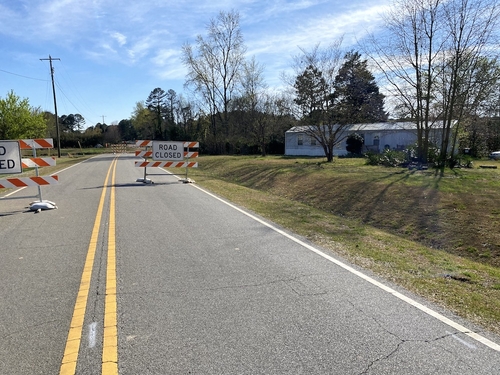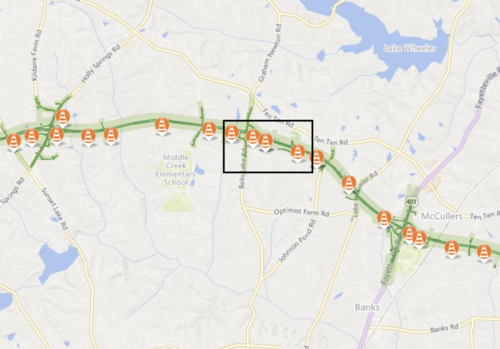DOT allegedly failed to set targets to reduce driving, required as part of settlement over Wake County toll road

The state Department of Transportation has not met its obligations under an historic settlement agreement over the Complete 540 toll road, according to a letter from the Southern Environmental Law Center.
The letter to DOT, dated March 17, alleges the agency has failed to set targets to reduce the number of vehicle miles traveled – known as VMTs – per North Carolina licensed driver. Those targets were supposed to be in place once the results of a VMT reduction study were distributed, which occurred two years ago. SELC asks the agency to issue the VMT targets no later than June 30.
The transportation sector is the largest emitter of greenhouse gasses, a major driver of climate change, in North Carolina. More than a year ago, Gov. Cooper issued Executive Order 246, establishing goals to reduce transportation-related emissions. The goals included an increase in the number of electric vehicles, publication of a greenhouse gas inventory every two years, and the development of a Clean Transportation Plan.
In turn, the Clean Transportation Plan calls for reducing VMTs with more robust public transit systems, among other strategies.
However, the Complete 540 project is not designed to reduce the number of VMTs; it could actually increase them in rapidly growing southern Wake County. In turn, it could be more difficult for North Carolina to meet its climate goals as laid out in the executive order.

When finished, the $2.2 billion project will connect with the existing tollway near Highway 55 in Apex, then route 28 miles through southern Wake County before joining I-440 and U.S. 64 near Knightdale.
In 2019, SELC, representing Sound Rivers, CleanAIRE NC and the Center for Biological Diversity, sued DOT and several other state and federal agencies over the project.
The settlement agreement contained many environmental protections, worth $10 million, including the requirement that DOT explore ways to reduce the number of VMTs.
Logen Hodges, director of marketing and communications for DOT’s Turnpike Authority, told Policy Watch in an emailed statement that the agency “has fulfilled or will fulfill all the items agreed to” as part of the agreement. Of the 27 items agreed to, seven are complete, two are not possible until after construction and 18 are underway, Hodges said.
The VMT Reduction Toolkit has been developed and is available online. However, DOT has yet to set the VMT reduction targets. The agency “continues to collect sufficient data necessary” to do so, Hodges wrote.

In response, SELC Litigation Director Kym Meyer wrote that “we cannot possibly imagine what is meant by ‘NCDOT continues to collect sufficient data necessary to set targets for VMT reduction.'”
The settlement agreement, Meyer wrote, specifically requires those targets to be set already. Yet they are not included in the Clean Transportation Plan, released earlier this year.
Meyer applauded the VMT reduction tool kit, but added that “we are disappointed in how little work has been done to share it” with metropolitan planning organizations “or to work with communities to implement the strategies.”
A VMT task force has met eight times. But Meyer, who attended those meetings, said that at none of them “did it feel like meaningful progress was being made, or even expected. … will continue to meet and look forward to participating and executing actions that force actual change.”
“We have yet to see any progress,” Meyer added, “and we are running out of time.”









